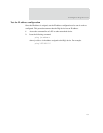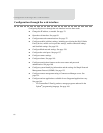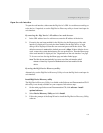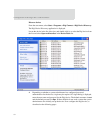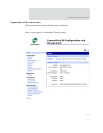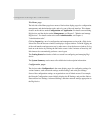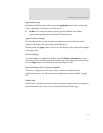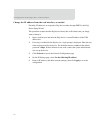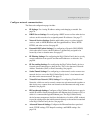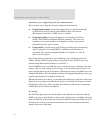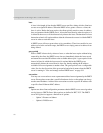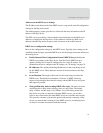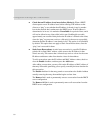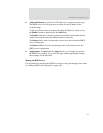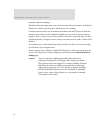
75
Configure Digi devices
Configure network communications
The Network configuration pages include:
IP Settings: For viewing IP address settings and changing as needed. See
page 76.
DHCP Server Settings: For configuring a DHCP server to allow other devices
or hosts on this network to be assigned dynamic IP addresses. See page 77.
Network Services Settings: Enable and disables access to various network
services, such as ADDP, RealPort and Encrypted RealPort, Telnet, HTTP/
HTTPS, and other services. See page 82.
Dynamic DNS Update Settings: For configuring a Dynamic DNS (DDNS)
service that allows a user whose IP address is dynamically assigned to be
located by a host or domain name. See page 87.
IP Filtering Settings: For configuring the Digi Cellular Family device to only
accept connections from specific and known IP addresses or networks. See
page 90.
IP Forwarding Settings: For configuring the Digi Cellular Family device to
forward certain connections to other devices. This is also known as Network
Address Translation (NAT) or Port Forwarding. See page 91.
Socket Tunnel Settings: For configuring a socket tunnel, used to connect two
network devices: one on the Digi Cellular Family device’s local network and
the other on the remote network. See page 93.
Virtual Private Network (VPN) Settings: For configuring Virtual Private
Networks, which are used to securely connect two private networks together so
that devices may connect from one network to the other network using secure
channels. See page 99.
IP Pass-through Settings: Configures a Digi Cellular Family device to pass its
mobile IP address directly through and to the Ethernet device (router or PC) to
which it is connected through the Ethernet port. The Digi Cellular Family
device becomes transparent (similar to the behavior of a cable or DSL modem)
to provide a bridge from the mobile network directly to the end device attached
to the Digi Cellular Family device. See page 94.
Advanced Network Settings: Configures the Ethernet Interface speed and
mode, TCP/IP settings, TCP keepalive settings, and DHCP settings. See
page 118.



